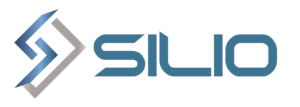
Enterprise Content Management (ECM) Solutions
On top of Microsoft SharePoint
On top of Microsoft SharePoint

ECM
User-Centric ECM
Enterprise Content Management (ECM) in SharePoint Server provides users with both a platform and individual solutions for developing, using, and managing documents, with familiar Office Client applications deeply integrated for document viewing and editing.
ECM systems rely on one key dependency more than technology, feature set, or amount of information managed: user adoption.

Greater Value from Information
SharePoint Server can enhance the effectiveness of customer service and sales teams by aggregating critical information from across the enterprise and by providing rapid, easy access to both structured and unstructured information. Document drafts and final versions can be managed as a unit, all final documents can be grouped and managed as a Document Set, and all content can be managed in-place by a compliance manager.
Productivity improvement
ECM in SharePoint Server includes a full collaboration platform user can create and manage without involving IT, using the Office Client applications they already use every day. Users can set up collaboration workspaces, social pages such as wikis and blogs, pictures, video and audio files, and business process workflow and forms – all still managed through SharePoint Server. With SharePoint Server users can create, find, and manage information quickly and avoid taking up IT time.

Users add value by participating
With Office and SharePoint, users can create a document and, during the save process, select or type in any required custom metadata information (including other metadata captured automatically). Users are not inconvenienced with the document save process and finding and managing documents at a later time for reuse and archiving is much improved.
Provide flexibility and control
An important aspect of any ECM system, and provided by SharePoint Server, is that it provide document-level control to limit access; set archiving, retention or deletion schedules; place legal holds; manage taxonomies and “folksonomies;” and manage and publish key information from the tools and Web pages already opened, but without placing undue restriction on the people who need to access that information.
